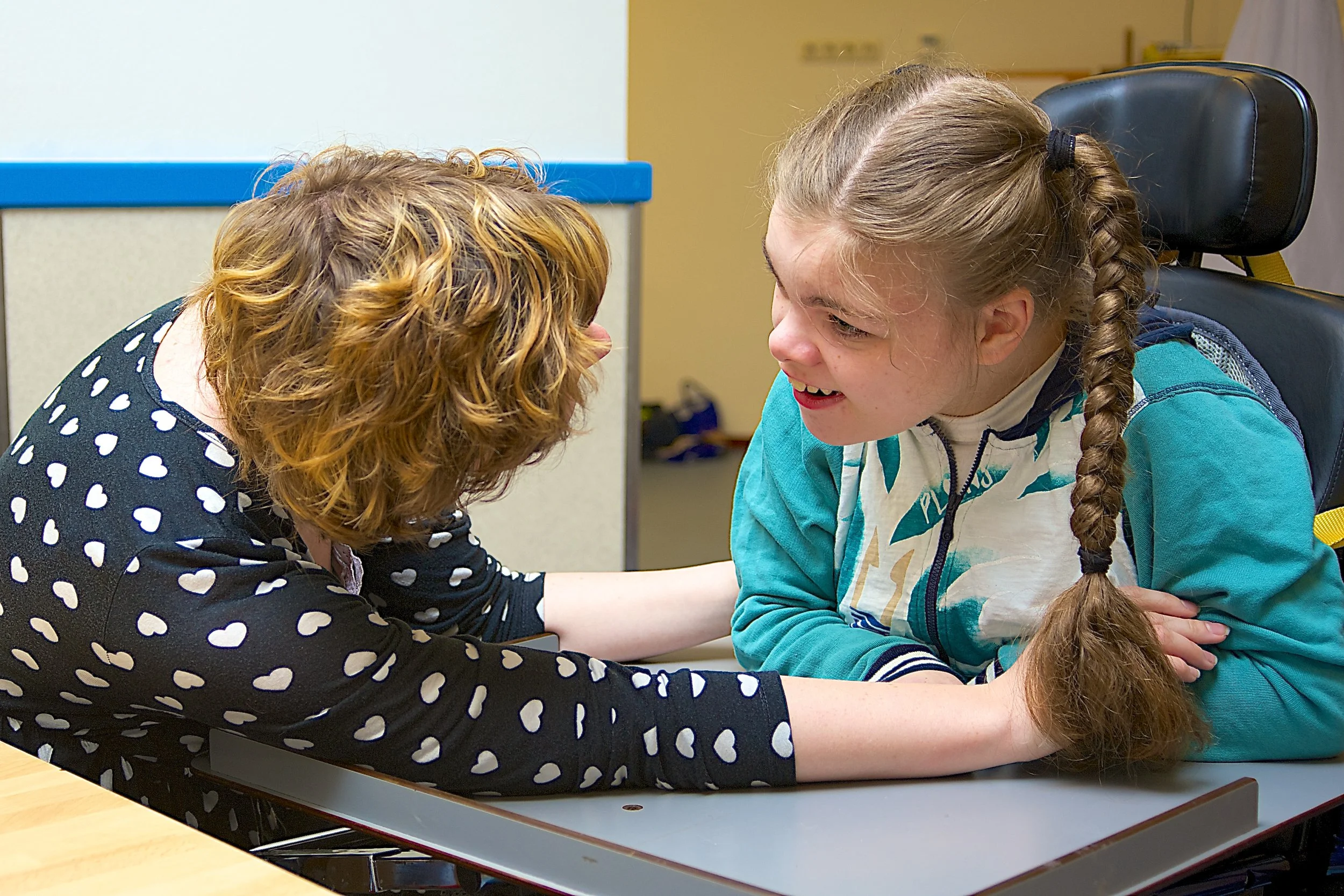Moving Toward a Place of Completeness
What does it look like to move from exclusion to representation to inclusion? This is a question that I posed recently to a room full of graduate students who are taking a course in children’s spiritual formation with me this semester. We were discussing the importance of walking alongside families who have children with disabilities in our congregations. As we examined what support could look like, we acknowledged that we, as churches, were not necessarily succeeding at supporting these families well, if even at all. With a posture of openness, we were taking an honest look at our practices, however well-intentioned, and naming the pronounced gaps that still seemed to emerge for our families who live with disabilities. It was a difficult conversation but a necessary one because of our desire to be inclusive communities of faith. Despite that desire, the fact of the matter is that for many of our churches, we haven’t even made it to the point of representation yet when it comes to our families with disabilities.
As we grappled with the complexities of disability ministry in churches, the theme that continually surfaced was that of overwhelmedness; in many instances, the underlying fear of not knowing what to do or where to start resulted in doing nothing. And while the feeling of being overwhelmed with uncertainty is a powerful, stagnating force, ultimately, we can’t let it take control of our actions, especially when it comes to the kingdom of God.
Before I continue, though, I believe it is important to offer these two prefaces:
While I am speaking about this from the perspective of children’s ministry, this conversation should not be limited to children with disabilities. We must also acknowledge that adults who live with disabilities are often overlooked within our faith communities as well.
There are differing viewpoints regarding the language used to discuss disability—people-first versus identity-first language, the use of the term special needs, etc. When considering what language to use, it is best to adopt the preferred language of the families within your church. If you are uncertain of their preference, then I would encourage you to ask. This demonstrates your desire to honor and show respect to people who have often been marginalized. Throughout this article, I will use people-first language—people with disabilities or people who live with disabilities, etc.—because that is the preferred language within my sphere. However, I want to pre-emptively acknowledge that, for some, this is not the preferred language, and my desire is not to be offensive.
Imagine the following scenario, if you will. You are a children’s minister who is trying to be more intentional about how your ministry supports a child with autism. You have located an adult volunteer to serve as a “buddy” during Bible class so that this child not only has the assistance he needs to be with his peers but also so that his mother is able to take part in an adult Bible class. This system seems set up to work well—and it does for a while. However, because of pervasive sensory issues, there are quite a few Sunday mornings when making it to church just doesn’t happen. After a while, the volunteer asks you to require the parent to let you know if they are going to be at church each Sunday. In fact, the volunteer asks for this to be a condition of the support, and it becomes one. As you might imagine, the parent feels the weight—the othering—of this request. However unintentional, the message is “we want you here, but we are going to make your participation conditional.” To some, this volunteer’s request might not seem like a very big ask, but to the parent who already feels isolated and weary, it makes them feel like more of a burden and stands as another example of how church isn’t really a place that welcomes them.
We must change this. We must do better. What if, through some simple recalibrations, we could become an environment that embraces both our neurotypical children and our children who live with disabilities? Our churches would then bear witness to the fullness of God’s kingdom. While there are any number of suggestions that would nurture a more inclusive environment, I believe the following four suggestions provide a good starting point.
A shift in perspective. We, as a church, must view our faith community as one that is incomplete when our families with disabilities are not an included and valued part of our church. To begin making that shift requires that we assume a posture of listening—listening well to our families with disabilities about their needs and challenges. We must not imagine that we know what our families need; instead, we should ask them, and then we must use that knowledge to shape our practices.
Tangible support. Support can exist in both large and small ways. Unfortunately, churches sometimes fall prey to the belief that if they aren’t able to enact a full-blown, well-funded program then it is better to do nothing. However, starting somewhere is the key to tangible support. This could be (a) the one-to-one pairing of adults and children to support children with specific needs in a classroom setting, (b) turning an unused space into a sensory room where students can take a much-needed break when they are experiencing sensory overload, and (c) access to supportive devices throughout the building such as fidgets, noise-reducing headphones, and visual schedules. While there are many more possibilities that could be considered, these are a handful of easy, practical ways to support children who live with disabilities.
Flexible spaces. Whether in our Bible classes or worship times, it can be easy to focus our attention on the way we believe something should be done, adhering to a structure that does not work for all. By embracing a posture of flexibility, which I would describe as hospitality, we cultivate an environment where each child and that child’s unique needs are received and included as a valued part of the kingdom of God. Practically speaking, this could mean:
creating space at the back of a classroom for a child who is bothered by being near others to be able to sit and still be an included part of the class;
Keeping a bin of clipboards, paper, and markers handy for a child with autism who utilizes drawing to minimize sensory overload;
Providing noise-reducing headphones for the child who is sensitive to the loudness of worship music;
Using lamps and sheer fabric covers to tone down the harsh fluorescent lights often found in church classrooms; and
Taking cues from a child who needs regular breaks—from the activities of the class, the groups of people, or the hard work of sustained focus—and offering those breaks.
Honoring language. This might be the most challenging of the suggestions because, while I truly believe that we seek to approach all people in our churches with dignity, respect, and value, our actions sometimes fall short when it comes to speaking about and to our children with disabilities. Are we valuing all they contribute to the faith community and including them in our ministry, or are we complaining about the need for additional accommodations? Are we really listening to them or simply responding disingenuously? Are we modeling a welcome and embrace of our children with disabilities through all we say and do? If our language doesn’t honor the presence of each child in the room—their voice, their needs, their value—then it becomes less likely that our church body as a whole will follow suit.
What does it look like to move from exclusion to representation to inclusion? It was a hard question for my class to wrestle with on that day because it meant that we had to acknowledge all of the ways that we were falling short. However, as we closed out class on that day, we found ourselves echoing two very important truths. One, when part of the body is missing, the body is incomplete, and two, we are called throughout Scripture to move toward a place of completeness.
Blessings,
Jennifer






